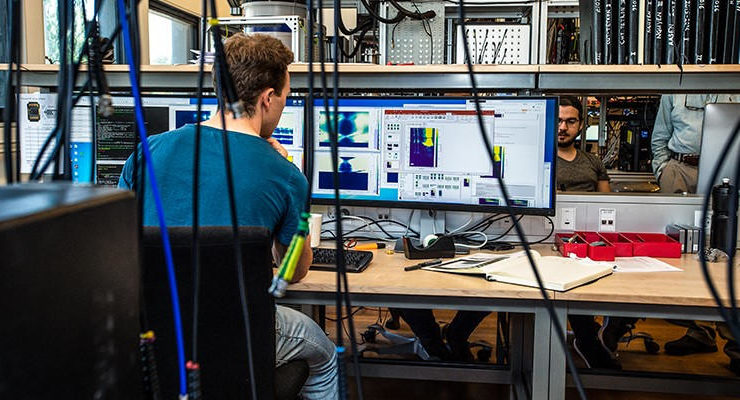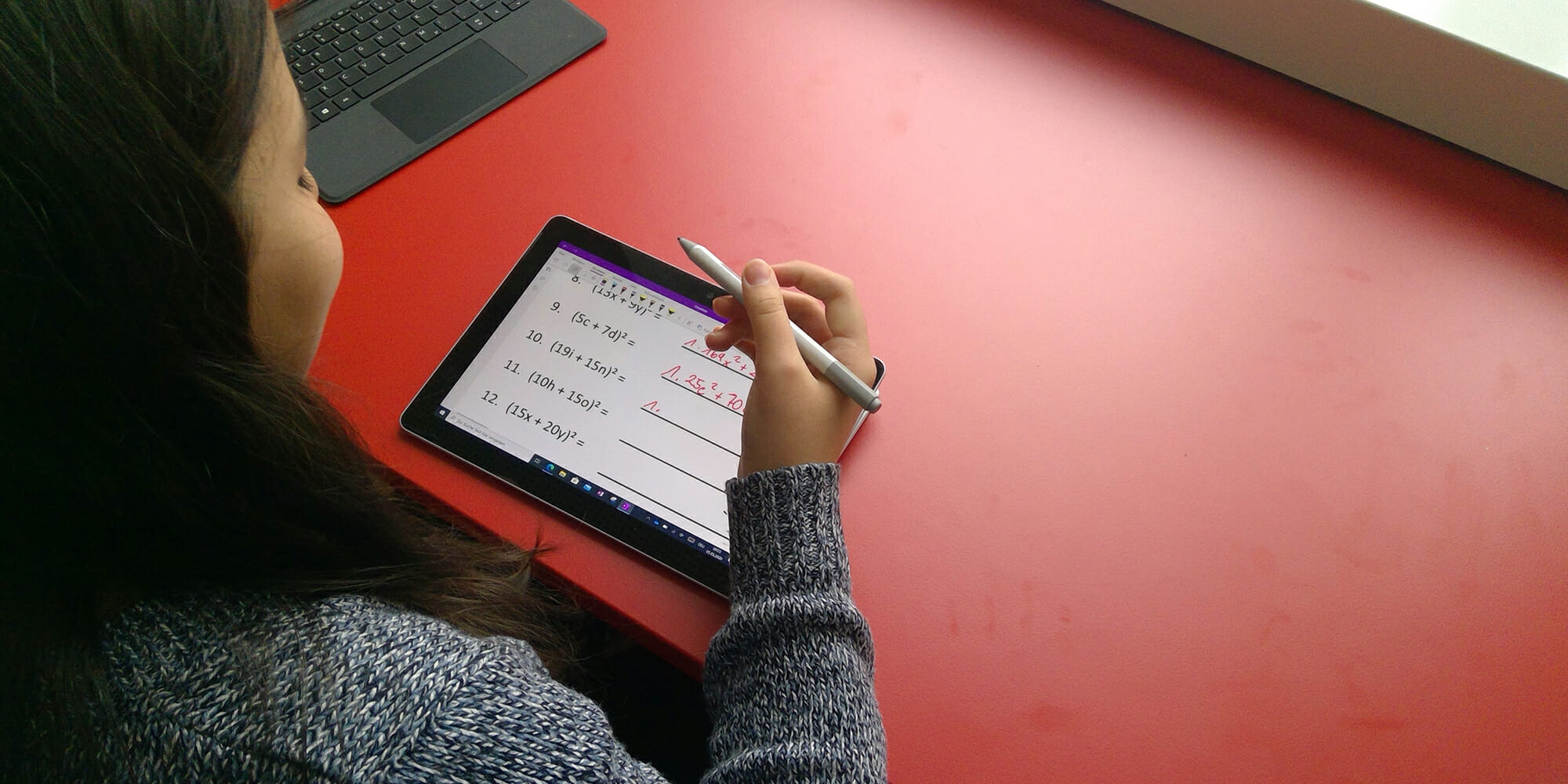
Engineer from anywhere with anyone. Why connected product innovation matters now
The traditional product innovation process no longer works. It’s time to embrace the four ‘must-haves’ of connected product innovation.


Carla Gonzalez Fernandez
Microsoft, Modern Work & Surface
“What we really wanted to achieve was simplicity for both our students and our educators. Through our digitalization efforts, we’ve seen that using technology to complement traditional teaching and learning is an investment for the future, not just for children, but for everyone.”
Martin Schnetzer, teacher and IT admin at Mittelschule Kirchdorf, Austria, reflects on the digital transformation that his school has embarked on over the last year – and how adopting Microsoft Teams and Surface devices has helped them succeed.
A chance visit to an education conference would inspire Schnetzer to lead his school through a major digital transformation, one driven not just by cutting edge technology, but also by creating a digital mindset and culture that would shape the institution’s approach to education.
“Our aim was to seamlessly integrate technology into the classroom to enhance teaching and learning, not replace elements that are vital to the development of students,” explains Schnetzer, “and we believe that the results we achieved prove this is possible.”
Mittelschule Kirchdorf’s digital journey started back in May 2019 when Schnetzer attended the education conference Didacta Digital in Linz, Austria. “I stopped at the Microsoft booth and was thrilled by the support of the Microsoft team, particularly the Microsoft Innovative Educator Experts,” says Schnetzer, “they showed me the different applications and systems, how to use them pedagogically and implement them at our school; I knew this was the technology we needed.”
Based in Lustenau, the most densely populated market town in Austria, Mittelschule Kirchdorf has around 35 teachers and 220 students. All the parents, especially those from lower-income families, hope that gaining a good education will provide their children with the opportunity for a brighter future.
The school is continually searching for ways to innovate and improve inclusivity and equality among its students, to enable each of them to do more, regardless of their background. To Schnetzer, the technologies he explored that day were the key to achieving the school mission.
By summertime, Schnetzer and Sabine Müller, headmistress at Mittelschule Kirchdorf, had set about analyzing the systems and processes at the school, gradually bringing on board the rest of their colleagues. They knew that to get the technologies approved by educational authorities – and to ensure it would reap benefits for the school – they needed to develop a digital concept to make education flexible, student-centered and accessible to all students and teachers, wherever they are.
Luckily for the school, digitalization within the education sector was becoming a priority for the Austrian Education Ministry and their municipality, who agreed to support the concept and fund the distribution of Microsoft Surface devices to the school, as well as other devices for the most underprivileged students to use at home.
“Our concept is based on seamless learning,” Schnetzer explains. “It was important for us to develop a solution that enabled hybrid learning and teaching and was compatible with any device, anywhere, so none of our students were at a disadvantage.”
By September, the school had set up its Microsoft Surface devices, and it wasn’t long before it had assigned Microsoft 365 to each of its user accounts. The team had initially planned a gradual roll-out of the next stages of deployment, but external circumstances caused a change of plan.
“When the global COVID-19 pandemic struck, we knew we had to act fast to ensure that teaching and learning wasn’t disrupted,” Sabine Müller says. “We accelerated the implementation of our digital concept to prepare for the new educational landscape.”
In just two weeks, they implemented Microsoft 365 and Microsoft Teams across the whole school, initially trialing it with a small selection of classes as they worked out the requirements needed. “We were nervous about implementing this new environment,” she admits, “but in fact, it was a very quick, smooth transition and it’s brought more benefits to the school than we imagined.”
Mittelschule Kirchdorf opted for Microsoft Intune to manage all its devices from a centralized system. “Microsoft Intune has proved to be simple and easy to manage,” Schnetzer says, “students can open their devices, and everything is set up and ready for them to use.” Within Intune, they created two groups to reflect the different needs of teachers and students and distributed relevant programs and settings.
“Our teachers have completed mandatory face-to-face, online training courses and 1:1 coaching,” Schnetzer explains. “It has improved their digital skills and empowered them to teach with confidence in this new hybrid way.” Communication between teachers and administration has also greatly improved, as staff have benefited from a simpler, clearer structure and digital conference rooms.
Teachers can also join the Microsoft Educator Community, a platform which helps them to learn, grow and connect with each other. Through this initiative, Schnetzer has become a certified Microsoft Innovative Educator Expert (MIEE), which champions global educator visionaries.
“I’m thrilled to be part of the community of MIEEs,” Schnetzer says. “If I have any questions, I post it on Microsoft Teams and receive support from everyone. It really helps me and my school to find solutions to any problems I encounter.”
For daily teaching, educators now upload documents, assignments and instructions onto OneNote, so students can learn regardless of where they are, even when absent from school due to sickness. Considering the COVID-19 social distancing orders, the school devised a shift-based timetable, which alternates small groups of students working at the school. Those who are at home, simply log in to Microsoft Teams and can see their teachers live and ask them questions.
Aside from the ability to learn from any location, the new technology has played a vital role in the wellbeing of the children. “Students are now able to connect seamlessly to the digital world via Microsoft Teams,” Schnetzer says. “After lessons, the students can go into breakout rooms and chat with each other. This social exchange has helped children feel less alone and isolated.”
Although it’s difficult to predict what lies ahead for society, those at Mittelschule Kirchdorf hope that the Austrian ministry and the local municipality will continue to support schools in their digitalization efforts in the long-term. In the meantime, the school is always looking for ways to improve and innovate.
“We are now part of a new government-led strategy called the ‘eight-point plan’, starting in September,” Schnetzer explains “The children in the first and second grades can get a device from the Austrian government and learn how to use the new technology we have implemented. It’s a great initiative.”
But for those who work or attend Mittelschule Kirchdorf, it’s clear that the decision to go beyond simply distributing devices to students is what really led to their success story.
“We hope that other schools in Austria and across Europe feel inspired not only to equip their students with devices where possible, but also to create their own holistic digital concept that can support student-centered and hybrid learning and teaching, and improve the wellbeing of both employees and students,” says Schnetzer.
“Most of all,” Schnetzer continues, “we hope other schools see how simple and easy a digital transformation can be. Educators don’t need to be afraid of integrating new technology and instead, we encourage schools to give it a try and see for themselves what amazing results they can achieve.”